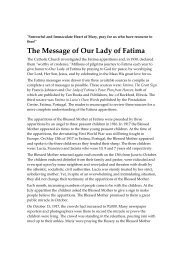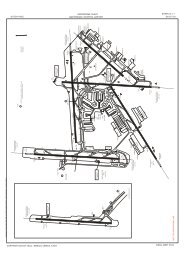Applied aeronautics; the airplane - Beeldbibliotheek
Applied aeronautics; the airplane - Beeldbibliotheek
Applied aeronautics; the airplane - Beeldbibliotheek
- No tags were found...
Create successful ePaper yourself
Turn your PDF publications into a flip-book with our unique Google optimized e-Paper software.
:—12 APPLIED AERONAUTICSor a velocity of a little over 55 m.p.li. Increasing his angle of attackstill fur<strong>the</strong>r, or at about 8 (leg., which is <strong>the</strong> lowest point on <strong>the</strong> curve,where <strong>the</strong> horsepower required for horizontal flight is only 30, we geta point of most economical flight. Tlien. as we decrease <strong>the</strong> angle ofattack, <strong>the</strong> power required rises rapidly until at 40 m.p.h. <strong>the</strong> two curvescross again and any increase in <strong>the</strong> angle of attack would cause <strong>the</strong> machineto stall in <strong>the</strong> sense of going down, which might take <strong>the</strong> form ofei<strong>the</strong>r a nose dive or tail slip. It is well to compare this with Fig. 20.F'kj. 24Calculation of power required to rVunbIt is also interesting to compare this with Fig. 23, taken fromLangley's The Stored Euergi/ of <strong>the</strong> Wind, and which illustrates <strong>the</strong>rapid changes in <strong>the</strong> velocity of <strong>the</strong> wind occurring in short intervals oftime. The vertical lines represent spaces of one minute and <strong>the</strong> horizontallines wind speeds differing by 4 m.p.h. It will be noticed that between32 and 24 min. <strong>the</strong> wind fell from about 37 m.p.h. to 12 m.i).h. and roseagain to 38 m.p.h. On account of <strong>the</strong> momentum of <strong>the</strong> <strong>airplane</strong> it wouldbe practically impossible for its actual velocity to change with anythinglike that rapidity, and as <strong>the</strong> lift depends upon <strong>the</strong> square of <strong>the</strong> velocityit is evident that <strong>the</strong> pilot would experience a series of ''bumps" when<strong>the</strong> velocity increased, and momentary drops when <strong>the</strong> velocity decreased.The feeling has been likened to a motor boat driving rapidly through achoppy sea.Power to ClimbSuppose <strong>the</strong> center of gravity of a machine be moving in <strong>the</strong> directionAB, Fig. 24, with a velocity of V miles per hour. The horsepowerwill <strong>the</strong>n be <strong>the</strong> sum of two components, viz., that necessary to overcome<strong>the</strong> wind resistance, as already given for horizontal flight and that necessaryto lift <strong>the</strong> machine through <strong>the</strong> distance CB in <strong>the</strong> time required for<strong>the</strong> machine to travel fiom A to B.Now if AB be taken to represent <strong>the</strong>distance <strong>the</strong> machine travels in an liour, BC would <strong>the</strong>n represent <strong>the</strong>velocity of climb. The power consumed in climbing is equal to <strong>the</strong>product of <strong>the</strong> weight of <strong>the</strong> machine in pounds by <strong>the</strong> velocity of climbin miles per hour divided by 375. Let us call AB/BC <strong>the</strong> climbing ratioR which gives us BC = AB/ K = V/R. We will have <strong>the</strong>n <strong>the</strong> i>owerexpended in <strong>the</strong> climb alone equal to WV/R, and <strong>the</strong> total horsepowerbecomes












